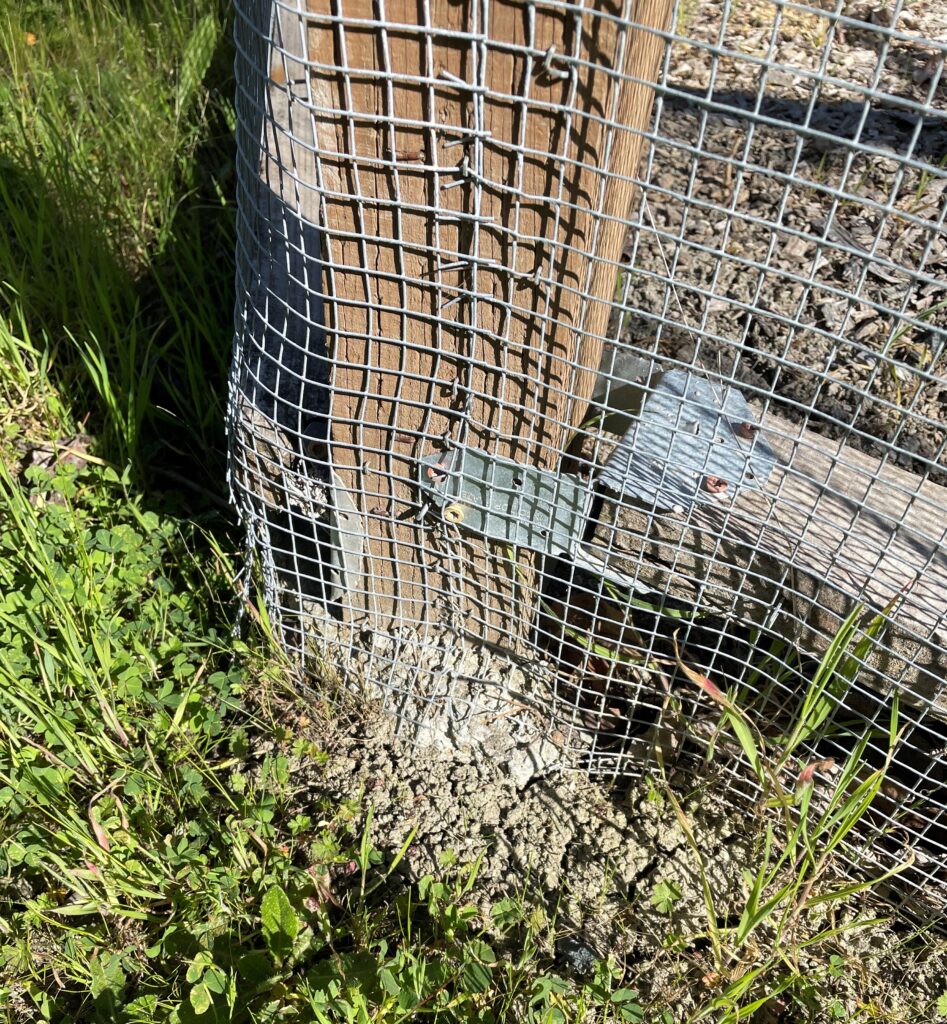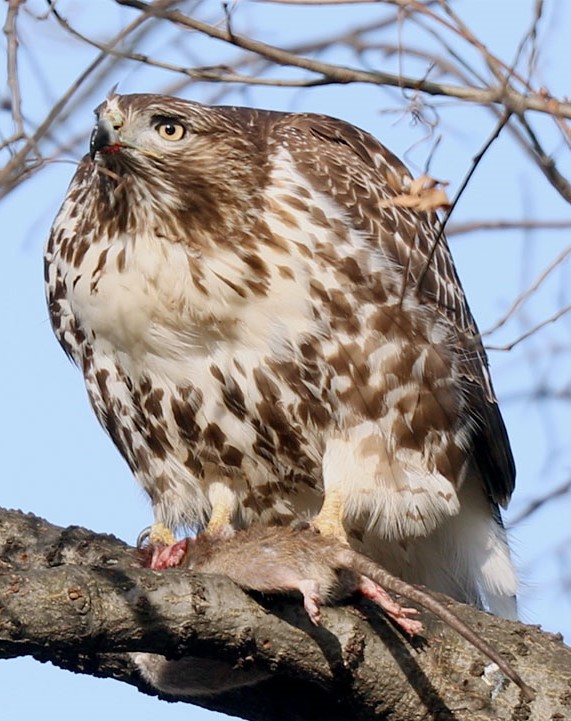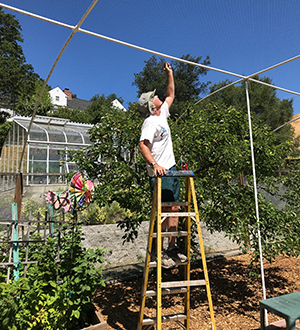
My most disappointing day as a Contra Costa gardener occurred over 20 years ago. I had been bragging the night before about the numerous giant peaches ripening on our backyard tree, and how we would have fresh fruit for weeks after I harvested them. When I went out to pick the next morning, they were all gone. Only peach pits were left, dangling from branches like bizarre Christmas ornaments!
Have your fruits been stolen by wildlife bandits? We work hard and pour expensive water onto our trees. It is discouraging to find our fruit stolen or destroyed by nature’s furry and feathered creatures. Experts estimate that 70-90% of backyard fruit ends up wasted, stolen, or destroyed by pests.
Who are the suspects? Birds of course, but also those creepy day and nighttime creatures – rodents. The worst thievery happens at night. I have old nighttime videos showing them scurrying in and around my fruit trees. As for thefts in broad daylight, I have seen our cute and fluffy tree squirrels run clutching small pears and plums in their jaws. Since gophers cannot climb trees and moles eat earthworms and grubs and not fruit or veggies, that leaves rats, voles, and squirrels as the prime suspects.
How might an all-natural gardener cut down on this theft and destruction in an environmentally safe way that will not poison nature’s food chain? I can recommend the following personally tested and eco-friendly techniques to help control rat, vole, and squirrel thievery.

Exclusion
Install ½” wire mesh fencing from 18” below ground level to 6 ½ ft. above ground around the area you wish to protect. This stops the burrowing rodents, such as gophers (who can destroy veggie beds), voles, and insatiable Norway rats.
Then install a canopy frame of PVC irrigation pipe above your deer fencing and fruit treetops. Drape bird netting over your PVC frame to shield your garden or orchard. Stitch the netting to the top of the wire mesh fencing with thick nylon thread, and voila! you have excluded climbing squirrels, roof rats, mice, and birds. These measures take some effort but have worked for me. They do not prevent 100% of thefts; however, we lost very little fruit (or veggies) last year.

Encourage Natural Predators
Consider adding an owl house. And be kind to and tolerant of our beneficial rodent predators, such as red-tailed hawks, gopher and king snakes, bobcats and coyotes. Even our domestic cats hunting at night help control rodents naturally. All you need to do is stay out of their way.
Trapping
Trapping can be unpleasant because you deal with dead critters, but it has been highly effective for me. Set baited Victor mouse and rat traps in out-of-the-way places, or in covered lockable trap boxes (Protecta) for areas exposed to pets or children. For gophers, set a pair of Macabee or cinch-style traps pointed in opposite directions inside an exposed main tunnel then cover it up again with dirt. Remove the traps (and hopefully a captured gopher) in 2-3 days.
If you own a larger property Have-a-Heart live traps can be set for relocating cute but destructive tree squirrels far away from your fruit trees. (CA state law prevents relocating live animals off your own property).
Use the strategy that works best for your own garden. But it is great to know that there are effective and eco-friendly alternatives to poison baits and toxic pesticides. Just say NO to those food chain poisons, and we will all benefit from a healthier backyard, neighborhood, and planet.
David George is a UC-certified Master Gardener and author of “Grandad’s Garden.” Email your comments and questions to: NakedGardener@diablogazette.com. In some cases, these may appear in future columns.


